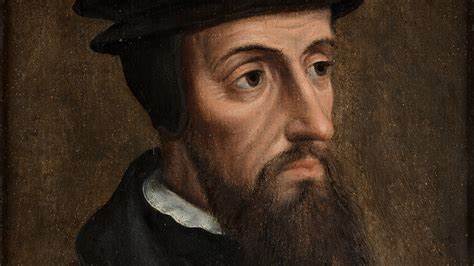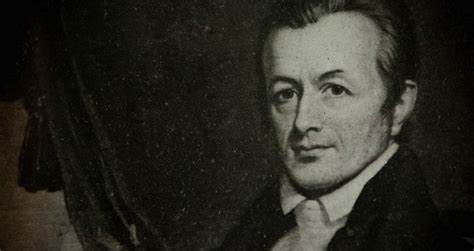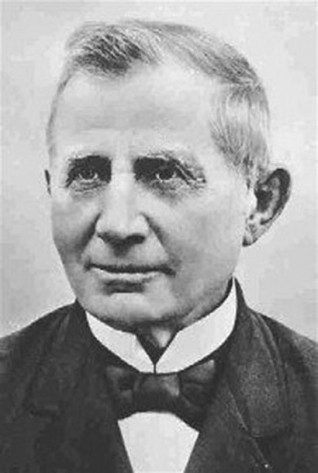
1564
On this day, February 6, 1564, an era came to an end. The man who had done as much as any other to forge the theology of the Reformation, preached his last sermon. Unable to walk, John Calvin was carried to church in a chair. His mouth filled with blood as he spoke and he had to leave.

It was a significant moment. For twenty-three years he had led Geneva. In the process he planted the seeds of modern democracy and constructed a logical framework on which to interpret Reformation doctrine.
John Calvin first came to Geneva in July 1536, planning to spend only one night. He had already published the first edition of his famous theology, Institutes of the Christian religion. Having received some training as a priest and then his BA as a lawyer, Calvin was equipped to write on the subject of moral law. William Farel, Geneva’s most prominent preacher and the man most eager to improve the city’s morals, saw in Calvin the helper he needed. He tried to persuade young Calvin to stay in Geneva. Calvin made excuses. Farel issued Calvin a stern warning which he said was from the Lord. Calvin gave in. That was the beginning of the partnership between Farel, Calvin and the people of Geneva.
Geneva was a fun-loving city. Like the other Protestants, Calvin taught that salvation is by the merit of Christ alone. At the same time, he insisted that the man who hopes for salvation must show a changed life. Farel and Calvin cracked down on the immorality of the city. Within a year, Geneva expelled them. When told he must leave, Calvin calmly replied, “If we had sought to please men, we should have been badly rewarded, but we serve a higher Master, who will not withhold from us our reward.” He became the Professor of Theology at Strasburg.
With the two outspoken pastors gone, Geneva slipped into moral and political deterioration. The citizens changed their minds. They invited Calvin back. He hesitated to return, knowing that he might be in for years of tough opposition. In the end, his conscience made him go back. He proposed a new form of rule. As biographer Richard Taylor Stevenson writes: “Catholicism is a religion of priests, Lutheranism of theologians, Calvinism of the believing congregation.”
Ideas of government created by Calvin found wider expression in Scotland and the United States when Calvinists brought them to those countries. Calvin’s model of church government became the model for national governments. Thus millions of individuals, Christian and non-Christian alike, felt the influence of Calvin’s theology even where his name was little known.
1812
That kind of a honeymoon was that? Adoniram Judson and Anne Hasseltine were married one day. The next, they attended Adoniram’s ordination to mission work. This day, February 6, 1812 was one of the coldest days of the year. Heavy snow had fallen the night before as a cold front moved in. Despite the cold, fifteen hundred people converged from many miles around Salem to the barn-like Tabernacle Church where the ceremony would be held.

Some brought their children, thinking that someday they would want to say, “I saw America’s first foreign missionaries ordained.” Adoniram Judson is often called America’s first foreign missionary. This is only one-fifth true. He became the most famous of the men ordained that day, but four other Congregationalists (Samuel Nott, Samuel Newell, Gordon Hall, and Luther Rice) were set aside for missions with him and sailed for India that same year. And Judson’s wife Anne, “Nancy,” was beside him, too. Without her he would not have succeeded.
The service began at eleven. On a hard wooden settee, surrounded by dignitaries, sat the five young men who would soon say farewell to their homes and sail to the orient to tell others of Christ. In those days of slow travel, scant medical knowledge, and the dangers of sailing, the audience realized this might not only be an ordination but also a final farewell.
That the five were on the platform was largely a tribute to their own determination. While still students of Andover, they had agitated for the creation of the missionary society that was now sending them out. Now their mentors and supporters rose to speak.
After songs, Dr. Griffin gave a prayer during which the auditorium fell deathly still. Dr. Wood followed with the sermon, hoping to see the young men again at “the glorious appearing of the son of God” when the fruits of their labors would be apparent.
Five ministers placed their hands on the heads of the five missionaries as Dr. Jedidiah Morse consecrated them. People wept during his prayer which was charged with a sense of farewell. When Dr. Spring charged the five to do their duty, he noted that it was a new and important enterprise that they undertook, before which every former effort of the American church retired “like stars before the rising sun.” Samuel Worcester inducted them into the brotherhood of the ministry and offered the right hand of fellowship. “Go carry to the poor heathen the good news of pardon, peace and eternal life. Tell them of the God whom we adore; of the Savior in whom we trust; of the glorious immortality for which we hope…” he said. The sun was well past its peak before Dr. Spring gave the closing prayer.
The sun had done little to warm the day, which was still bitterly cold. Students had to walk the sixteen miles back to Andover. One of them, Ephraim Newton, collapsed in the snow, and was found half-frozen by other students who hurried to carry him to a nearby house where he was revived in blankets near a fire.
Like the Judsons, Nott and Newell married shortly before sailing to Asia, and had little chance for a honeymoon. Days and evenings were lost in fundraising and meetings. Unfavorable winds delayed the sailing of the ship Caravan with the Judsons and Newells aboard. When they finally did sail, they almost foundered in a storm, the captain remarking that only Providence could save them. While at sea, Adoniram studied Bible teaching on baptism and became a Baptist.
The Judsons did not remain in India, but became missionaries in Burma where Anne’s support of her husband during a period of captivity saved his life and cost hers. Newell lost his wife and newborn daughter shortly after reaching India. Ill health compelled Rice to return to the United States. Nott worked for many years in India.
1834
WHAT IS KNOWN about missionary Ludwig Nommensen can be summed up in this story: One day, several Batak chiefs entered Nommensen’s hut on Sumatra (an island in Indonesia), intending to harass him until he lost patience. Again and again they demanded that he entertain them. Nommensen, who had once shamed himself by throwing an intruder out of his home, responded with a different attitude this time. He told them Bible stories, played his violin, showed them a magnifying glass, and even offered them food. Late at night he said he had to sleep. The chiefs did not leave but lay down, too. In the morning they woke to find he had covered them with blankets as they slept. They left his hut, ashamed.

Born in Denmark on this day 6 February 1834, Nommensen was raised in a Lutheran household. When he was just twelve, a cart crushed his legs. His parents assured him he would recover, but he knew they did not believe it. A year later, still bed-ridden, he was reading his Bible when he came across Jesus’s promise in the Gospel of John “If you ask anything in my name, I will do it” (John 14:14). “Is it true?” he asked his mother.
“It is true, because it is God’s word,” she replied. Nommensen took God at his word and promised that if he were made healthy again, he would become a missionary. By the time he was sixteen, he was able to walk. He entered a church to thank God for his healing and asked in prayer if God indeed wanted him to become a missionary. He felt convinced that the answer was “yes.” However, because his father died around that time, he had to support his family, and was twenty-four years old before he could begin training with the Rhenish Mission Society. In 1862, he sailed for Sumatra where he spent the rest of his life.
For several years, the fruits of Nommensen’s efforts appeared negligible. Witchdoctors attempted to poison him. Not until 1865 did he baptize his first convert. The trouble in Sumatra was that anyone who became a Christian lost their place in the tightly-integrated clan structure. Nommensen quickly recognized that the best model for a Batak church would be one which adapted to the clan structure, placing all power and responsibility into the hands of the Batak themselves. He translated the New Testament into their language.
When a few chiefs converted to Christianity, entire clans followed. Fourteen years after Nommensen’s arrival on the island, there were two thousand Christians. The numbers accelerated in the years that followed, and by his death in 1918, there were one hundred and eighty thousand converts. Now, the problem was not how to convert the Batak, but how to train so many. The Dutch assisted Nommensen’s efforts by having school teachers teach Batak students the catechism.
Despite the growing number of converts, Nommensen wanted more. He moved into a remote mountain area of the island to claim its inhabitants for Christ. When the Dutch left Sumatra in World War II, the native church stood the test, increasing fourfold.
In 1881 Nommensen visited Germany with his wife. He had to leave her behind when he returned to Sumatra, for she was gravely ill. She died before he could see her again, which caused him deep pain. He also lost four of his children to early deaths. By his own death, he had overseen the creation of schools, hospitals, and a seminary to serve the Batak believers. Although now surrounded by Muslims, Sumatra’s church remains lively to this day.
